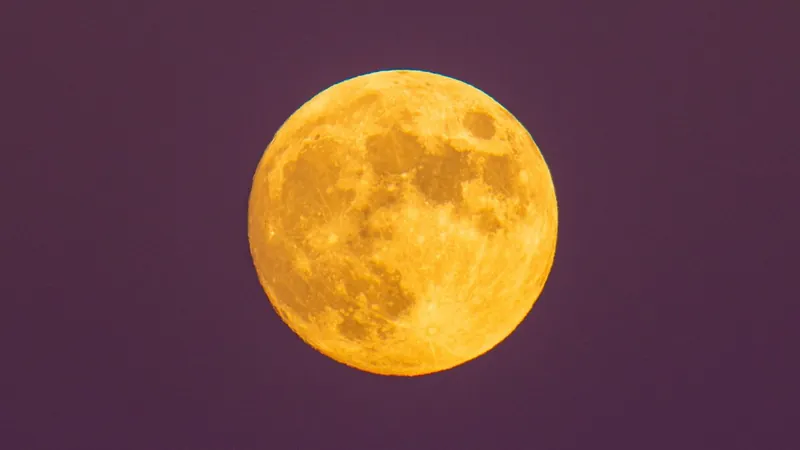
Beaver Moon 2024: Witness the Spectacular Final Supermoon of the Year Next to the Enigmatic Seven Sisters!
2024-11-12
Author: Rajesh
Introduction
Are you ready for a celestial show? Mark your calendars! The fourth and final supermoon of 2024, known as the Beaver Moon, will be fully illuminated on Friday, November 15. However, the main event will be best viewed from North America during its stunning ascent in the east on November 16.
Origin of the Name
Traditionally named the Beaver Moon, this full moon gets its moniker due to the beavers that start building their winter dams around this time in the northeastern U.S. It's also referred to as the Frost Moon and the Snow Moon, reflecting the impending arrival of winter and the chill that accompanies it. For the Anishinaabeg people, this phase is recognized as 'Baashkaakodin Giizis,' or the 'Freezing Moon,' highlighting the rich cultural significance across different communities.
The Significance of the Beaver Moon
This Beaver Moon is particularly special as it's the concluding supermoon of the year, following the Sturgeon Moon in August, the Harvest Moon in September, and the Hunter's Moon in October. But what exactly is a supermoon? It's when the moon reaches its closest approach to Earth, known as perigee, making it appear larger and brighter than usual.
Viewing Details
While the moon will officially reach full illumination at 4:28 p.m. EST (21:28 UTC) on November 15, the most breathtaking view will come shortly after sunset. As the sun dips below the horizon, the Beaver Moon rises approximately 20 to 30 minutes later, offering the perfect opportunity for stargazers to catch its golden glow.
Spotting the Seven Sisters
If you're an astronomy enthusiast, don’t miss the chance to spot the sparkling Pleiades star cluster, affectionately known as the 'Seven Sisters.' On the night of November 15, you'll find the Pleiades glimmering to the lower left of the Beaver Moon. By the next evening, this charming star cluster will shift to the upper right of the moon, creating a stunning visual for skywatchers.
Enhancing the Experience
Want to enhance your lunar viewing experience? While the moon is visible to the naked eye, binoculars or a telescope can unveil fascinating details on its surface that remain hidden without optical aid. As the moon rises, its brightness increases, so prepare for a dazzling display!
Looking Ahead
Don't forget: the lunar excitement doesn't stop with the Beaver Moon! The final full moon of 2024, known as the 'Cold Moon,' will rise on December 15. Keep looking up, and enjoy these astronomical wonders lighting up our skies!



 Brasil (PT)
Brasil (PT)
 Canada (EN)
Canada (EN)
 Chile (ES)
Chile (ES)
 España (ES)
España (ES)
 France (FR)
France (FR)
 Hong Kong (EN)
Hong Kong (EN)
 Italia (IT)
Italia (IT)
 日本 (JA)
日本 (JA)
 Magyarország (HU)
Magyarország (HU)
 Norge (NO)
Norge (NO)
 Polska (PL)
Polska (PL)
 Schweiz (DE)
Schweiz (DE)
 Singapore (EN)
Singapore (EN)
 Sverige (SV)
Sverige (SV)
 Suomi (FI)
Suomi (FI)
 Türkiye (TR)
Türkiye (TR)